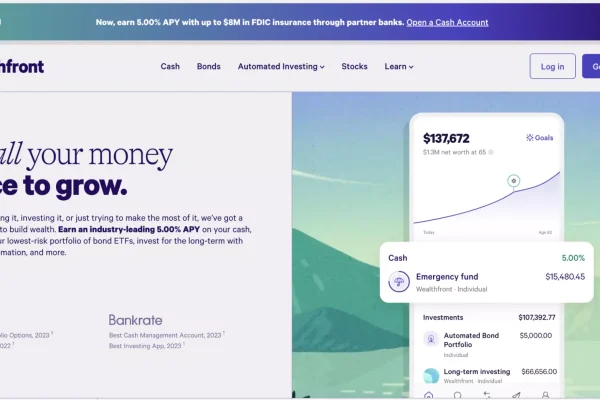Let’s be honest. The freelance life is a beautiful paradox. You have the freedom of being your own boss, setting your own hours, and ditching the soul-crushing commute. But when it comes to proving your financial stability to a bank for a loan? Well, that freedom can suddenly feel like a major liability.
Traditional lenders love W-2s and predictable pay stubs. They speak that language fluently. Our world of 1099s, variable income, and feast-or-faint cycles? It’s a foreign dialect that often gets lost in translation. But securing a loan—for a home, a car, or to grow your business—is far from impossible. It just requires a different kind of financial planning.
Why Is It So Hard to Get a Loan as a Freelancer?
Think of it from the lender’s perspective. They’re risk-averse. Their primary question is simple: “Can this person reliably pay us back?” For a salaried employee, the answer is a relatively straightforward “yes, based on this consistent history.” For you, the answer is buried in a mosaic of client payments, project timelines, and dry spells.
Lenders aren’t trying to be difficult, honestly. They’re just using a measuring tape designed for a different shape. Your financial profile is more of an abstract sculpture than a standard rectangle. The key is to sand down the edges and present a clear, coherent picture they can understand.
The Pre-Loan Financial Tune-Up: Getting Your Ducks in a Row
You wouldn’t run a marathon without training. And you shouldn’t apply for a loan without getting your finances into peak condition. This process takes time—think months, not days. Here’s your training plan.
1. Build a Rock-Solid Paper Trail
This is non-negotiable. Lenders will typically ask for two years of personal tax returns. That’s your baseline. But you can go further. So much further.
- Profit & Loss Statements: Create a simple P&L. It doesn’t need to be fancy, but it should clearly show your income minus your business expenses. This demonstrates you’re managing your venture professionally.
- Bank Statements: Keep your business and personal accounts as separate as possible. Consistent, high-volume deposits into a single account tell a powerful story.
- Client Contracts & Recurring Revenue: Got a retainer client or a long-term project? Having that contract on hand can be like gold dust, proving future income stability.
2. Boost That Credit Score (Seriously)
Your credit score becomes even more critical when your income is variable. It’s the universal signifier of trust. Pay down revolving debt, like credit cards. Keep your credit utilization below 30%. And for goodness sake, pay every single bill on time, every time. Set up autopay if you have to. A stellar credit score can often compensate for income that looks a little… jumpy… on paper.
3. The Magic of Consistent Savings
This does two things. First, a healthy savings account acts as a buffer for your variable income, which makes you a less risky borrower in the eyes of a lender. Second, it shows financial discipline. Try to build an emergency fund that covers 3-6 months of expenses. Then, start stashing cash for a larger down payment. A bigger down payment means a smaller loan, and that always looks more attractive.
Choosing the Right Loan and Lender
Not all loans are created equal, and the same goes for lenders. You have options beyond the big traditional banks, who can be, let’s say, a bit rigid.
| Lender Type | Pros for Freelancers | Cons to Consider |
| Credit Unions | Often more community-focused and willing to consider the whole financial picture. They might use “manual underwriting.” | May have membership requirements. |
| Online Lenders | Fast, tech-driven applications. They often use alternative data to assess creditworthiness. | Interest rates can be higher. Watch out for fees. |
| Specialist “Gig Economy” Lenders | Built specifically for people like you! They analyze your bank deposits, not just tax returns. | A newer model. Do your due diligence on their reputation. |
And then there’s the loan type itself. A personal loan for self-employed professionals might be easier to get for smaller amounts, but the interest can be steep. For a mortgage, you might look into a bank statement loan, which uses your bank deposits rather than your tax returns to qualify you. They’re designed for this exact situation.
The Application Process: Telling Your Story
When you apply, you’re not just submitting forms. You’re narrating your career. Be prepared to explain your work, your industry, and why your income is what it is.
- Be a Pro: Present your documents neatly and thoroughly. A well-organized PDF portfolio of your tax returns, bank statements, and P&L statements makes you look credible.
- Explain the Dips: If you had a slow quarter, be ready to explain why. Was it a planned investment in new equipment? A seasonal slowdown you anticipated? Context is everything.
- Highlight Growth: If your income has a strong upward trend, make sure that’s crystal clear. Lenders love a good growth story.
A Final Thought: It’s About Building a Foundation
In the end, the process of securing a loan as a freelancer isn’t just about getting to “yes.” It’s a forced audit of your financial health. It pushes you to build the very systems—the consistent savings, the clean bookkeeping, the stellar credit—that create lasting stability. The loan might be the goal, but the real win is forging a financial life that’s as resilient and independent as you are. That’s an asset no bank can ever lend you, and one they can never take away.








